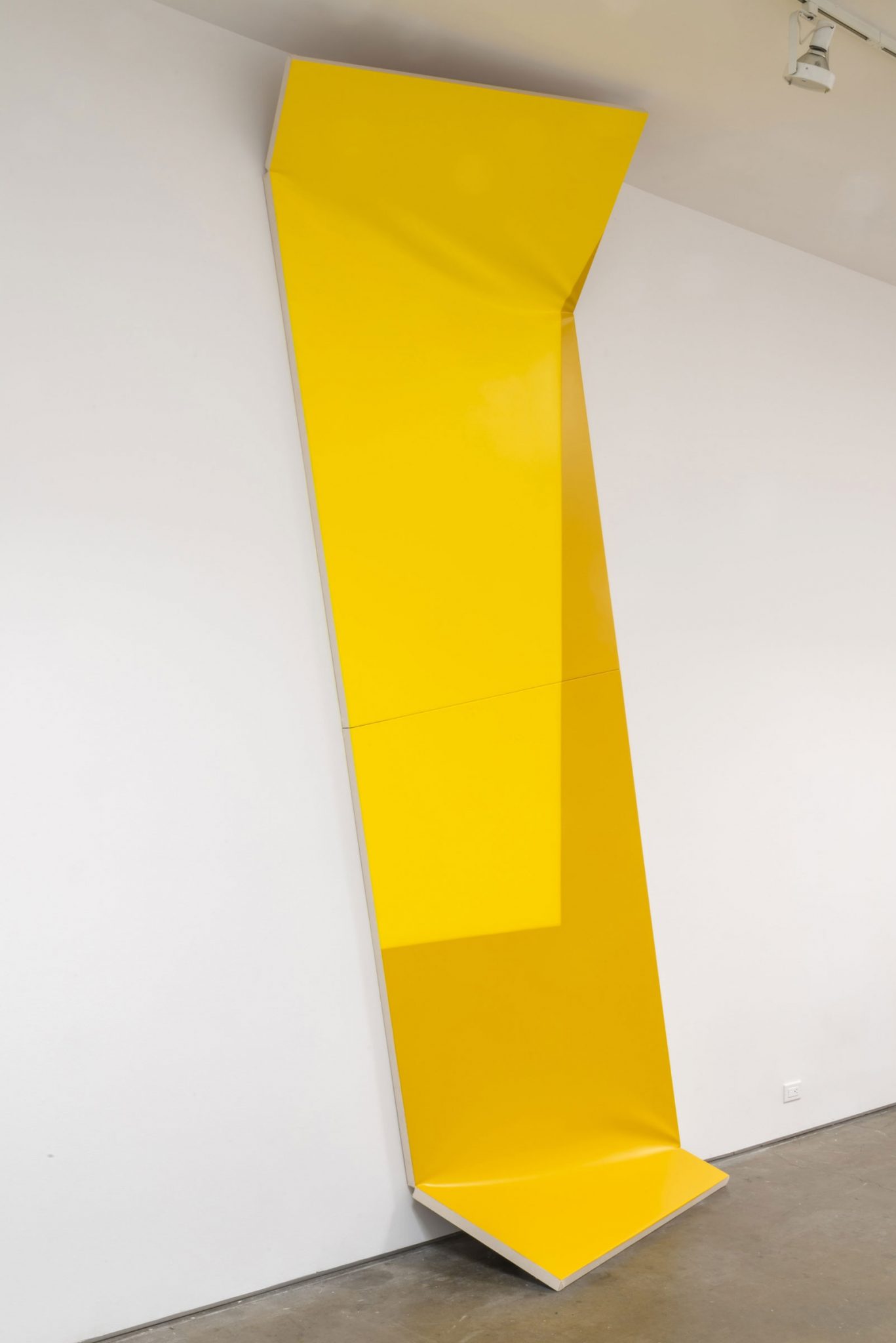Kaz Oshiro is firstly a painter. This is easy to forget. Over the course of a decade, he has made a career of creating trompe l’oeil objects, seemingly exact replicas of everyday items like kitchen cabinetry, speakers, truck tailgates and, a couple of years ago, a large yellow Dumpster (stains and all), recently acquired by the Los Angeles County Museum of Art. Ultimately, however, these objects are just paint, Bondo, canvas and stretchers, and though Oshiro always leaves one side of them open to reveal their structure or armature, one still strangely believes in them as objects and not as paintings.
Oshiro’s commitment to mimicry with a shy reveal, and the discipline with which he has pursued this practice, makes his show at Honor Fraser a breakthrough. Unlike the earlier trompe l’oeil works, here there is absolutely no doubt that the nine works in the exhibition, all pressing at the edges of the gallery (bumped up against the ceiling, propped on the floor or lodged in corners), are paintings, and there is no need for them to be anything else.
Oshiro’s relationship to painting and illusion has changed. He now imagines whole paintings, guiltless monochromes, twisted in actual space. Oshiro does not build these works from visual phenomena as, say, Ellsworth Kelly responds to the interactions of certain colours or tries to mimic a shadow thrown by a barn door. Nor is he intent on experimenting with abstract form and materials, as, say, Imi Knoebel does in his idiosyncratic enterprises. Instead, Oshiro has made paintings that exist as complete, rather ordinary monochromes first – finished and resolved thoughts – and then they somehow come into contact with, are distorted and torqued by, and ultimate adhere to, the gallery in which they find themselves. One feels as if the paintings flew in and stuck to the walls in unusual positions, like pieces of paper in a windstorm.
Now the illusion resides not in the real object/false object two-step of Oshiro’s early work, but in the theatre of the circumstance, the narrative of how Oshiro relates his paintings to the gallery. The paintings are paintings, built to be where they are, but in being placed in such a way, able to cant and play with the gallery, they paradoxically seem more imaginative, more prone to beauty and flights of fancy. There is no visual trick to the work, just painting opening a space for itself on its own terms and having fun.
The one false note in the show, the unnecessary inclusion of a traditional Oshiro object, a trompe l’oeil file cabinet, further draws out the artist’s development. The file cabinet seems twice an anchor for the proceedings: it shows Oshiro clinging to his old work, not quite confident in fully letting go; but more importantly, the object made of painting seems the most earthbound thing in the show. What was illusion now feels leaden, and what is real – the paintings being paintings – seems liberated to dream. Nice trick indeed.
This article was first published in the Summer 2013 issue.
